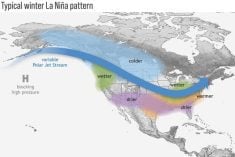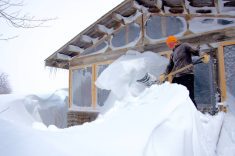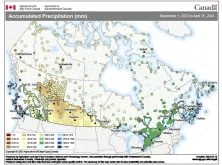Before focusing on this issue’s meteorology 101 class, let’s look at February’s global temperatures. In the last article, I noted the current La Niña officially ended in February and we have now entered the neutral phase of ocean surface temperatures across the tropical Pacific. The La Niña phase is associated with cooler ocean temperatures that usually equate to a drop in global temperatures. Despite this, we saw top-10 global temperatures during the last three-year-long La Niña event.
It may not be surprising that global temperatures in February were warm. This February ranked as the fourth warmest on record, according to the National Oceanic and Atmospheric Association (NOAA), NASA and the Japanese Meteorological Agency.
The European Copernicus Climate Change Service ranked February as the fifth warmest on record. NOAA, thanks to new research, has extended its global temperature records back to 1850 and February is the first month that includes this new data set, which is 30 years longer than the previous set. Thanks to Jeff Masters and the Yale Climate Connections for this piece of information.
Read Also

October rain recharges Manitoba soils
Daniel Bezte looks back on October weather on the Prairies and looks ahead to see whether there’s any consensus for this winter’s weather.
Most of us in North America are asking where all the heat was, because our part of the world didn’t crack the top 30 warmest years on record. But, North America makes up about 16.5 per cent of the world’s land mass and only 4.5 per cent of the whole world.
Some people seem to have a hard time understanding this and if something doesn’t directly affect them, well, to them it is not happening.
Now onto this week’s topic. In the last meteorology 101 article, we looked at the energy that comes from the sun and enters our atmosphere, known as insolation. This shortwave energy comes through the atmosphere, getting scattered and refracted along the way.
Now let’s look at how and why much of that energy is reflected.
Our dimming Earth
A good chunk of the sun’s energy that reaches Earth is reflected away, never doing any work. On average, over a year, the Earth reflects about 31 per cent of the sun’s energy back into space. This reflection is known as Earthshine.
If we compare it to the moon, which reflects about six to eight per cent of the sun’s energy, and consider that Earth is four times wider than the moon, you can quickly understand that Earth would appear very bright from space. In fact, astronauts often report just how startlingly bright Earth appears.
Scientists also use Earthshine to understand what might cause long-term temperature changes. If Earthshine increases, Earth is reflecting more of the sun’s energy and as a result, the Earth should cool. If Earthshine decreases, more energy is being absorbed and temperatures should increase.
During the 1980s and ’90s, Earthshine was on a slow decrease. In the 2000s to around 2015, amounts leveled off. Since then, Earthshine has once again seen a slow decline.
Research on Earthshine points toward human influences on pollution, greenhouse gases and sea ice levels as the reasons for the decline. Over the last 25 years, Earthshine has decreased by about two watts or around 0.1 per cent of the average amount of incoming solar radiation.
On a side note, the 11-year solar cycle of increasing and decreasing energy output from the sun also accounts for about a 0.1 per cent change in Earthshine.
So, the Earth reflects a fair bit of the sun’s energy. This reflection is determined largely by the brightness of the Earth’s surface and this is referred to as albedo.
Albedo is the percentage of the sun’s insolation that is reflected back into space. An object that absorbs all incoming solar radiation that hits it would have an albedo of zero per cent, while an object that reflects all radiation would have an albedo of 100 per cent.
Sometimes the colour of an object has the biggest effect on albedo. The darker the object, the lower the albedo. Go outside on a sunny day wearing dark clothing, or watch how quickly snow will melt when covered by a dark substance.
The texture of the surface also affects albedo. Smooth flat surfaces having a higher albedo. Finally, when it comes to water, the angle of the sun’s rays produces different amounts of albedo. Low sun angles produce more albedo compared to high sun angles. Just think of the last time you watched the sun set over a lake.
In the diagram, you can see some average albedo values for different surfaces around the Earth. Not shown is the albedo of clouds. The amount of light reflected by clouds is relatively unpredictable and one of the toughest things to figure when making climate models.
Clouds prevent a fair bit of the sun’s energy from reaching the Earth’s surface by reflecting this energy back into space. This process is known as cloud-albedo forcing. The more clouds covering the Earth, the greater the Earth’s albedo and thus the cooler the Earth will be.
It is a little more complicated than this, so we will soon look at what happens to the sun’s energy once it reaches Earth’s surface and what effects clouds have on it.
















